共和国总统乔·拜登周三公布了他所谓的“他的”下一个主要优先事项大约2万亿美元基础设施计划更新数千英里的道路,修复数千座桥梁,扩大宽带接入,并更换所有输送饮用水的铅管。
“这不是一个修修补补的计划,”拜登在匹兹堡的一次演讲中说。“这是美国一代人一次的投资,不像我们几十年前建造州际公路系统和太空竞赛以来所看到或做过的任何事情。事实上,这是二战以来美国最大的就业投资。”
为了支付这笔费用,他提议投资数万亿美元税在公司问题上,这是一个传统的两党议题,预计会引发共和党的反对。他说,他将邀请共和党人到椭圆形办公室,“听听他们”以及他们对如何为他的提议买单的想法。
总统还面临着来自进步民主党人的阻力,他们认为支出计划不够大,以及更多中间派民主党人的反对。平衡他们相互竞争的利益将被证明是至关重要的,因为民主党领导层正在推动一项法案通过一个它只能非常狭隘地控制的国会。
据一位知情人士透露,众议院议长南希·佩洛西(Nancy Pelosi)周一告诉同事,她希望在7月4日之前通过该法案,如果不是在当月晚些时候的话。
拜登周三表示:“我相信,如果我们现在采取行动,50年后,人们会回头说,‘这是美国赢得未来的时刻’。”他谴责了美国与其他国家相比的基础设施状况。“我提议的是对美国未来的一次性资本投资,大约2万亿美元,主要分布在8年内。它将带来历史性的就业增长、历史性的经济增长,帮助企业参与国际竞争,并创造更多收入。”
公司增税和“数百万个工作岗位”
他说,拜登的支出计划将创造数百万个就业机会。他在以工业和工会为中心的匹兹堡的一次演讲中详细介绍了第一部分,他还在2019年的演讲中启动了他的竞选活动,承诺要恢复中产阶级。
“两年前,我在匹兹堡开始竞选,说我在竞选是为了‘重建美国的脊梁’。”拜登说,称自己为“工会成员”“今天,我以你们总统的身份回来,阐述我认为我们应该如何做的愿景。”
总统提议将十年的支出与一系列对企业的增税相结合,白宫表示,这将在15年内支付全部基础设施费用。
拜登提议将公司税率从21%提高到28%,回到2017年共和党重写税法之前的水平。他的计划还将增加对跨国公司海外利润的税收,并取消对化石燃料行业的补贴等想法。
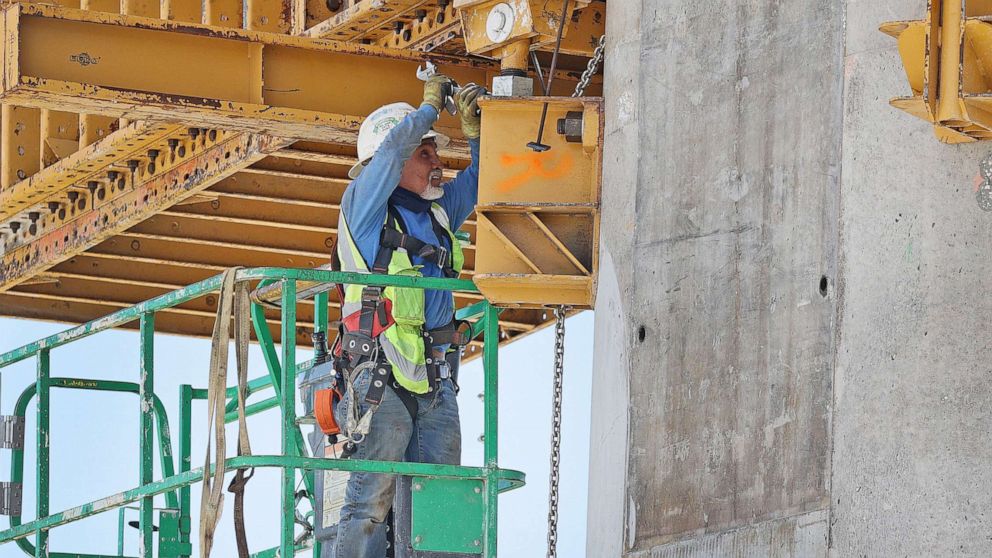
乔·雷德尔/盖蒂影像公司
一名建筑工人帮助修建标志性桥梁,取代并改善繁忙的高速公路
周二晚上,在与记者的电话中,一名政府官员不愿透露拜登是否计划向国会提交一整套或单独的提案。这位官员也没有透露任何拟议的基础设施项目可能何时开工。
当被问及这项被称为“美国就业计划”的提案将创造多少就业机会时,这位官员没有提供具体的数字,只是说它将“创造数百万个就业机会”。
第二部分下个月
拜登表示,他计划在4月下旬推出他的提议的第二个组成部分,新闻秘书Jen Psaki周一表示,该部分将侧重于“通过在儿童保健、医疗保健、教育和其他领域的投资,为中产阶级创造经济安全”。
据知情人士透露,这一部分的额外支出总额可能超过1万亿美元,周二将为参与制定该计划的国会委员会高级参议员举行简报会。
最近几个月,拜登暗示,他将为未来的支出提案买单,不仅向企业征税,还向富人征税。
阅读更多
拜登此前曾表示,年收入超过40万美元的美国人的税收将会增加,他支持将资本收益作为正常收入征税,这不在白宫本周提出的想法之内。
一名政府官员告诉美国广播公司新闻,“该计划的重点是公司税改革”,拜登周三重申,年收入低于40万美元的人不会增加。
“没有人,让我再说一遍,没有人收入低于40万美元会看到他们的联邦税上涨,仅此而已,”他说。“这不是惩罚任何人。我不反对百万富翁和亿万富翁。我相信美国人——相信美国的资本主义。”
这些税收提案有可能与下个月的支出提案一起出现。
基础设施计划中有什么
该一揽子计划分为四个领域:交通、家庭、护理和研发基础设施。
其中包括6210亿美元用于更新公路、铁路、港口、机场、公共交通和高速公路;1000亿美元,淘汰100%的铅管;1000亿美元在全国建设高速宽带;4000亿美元用于美国老年人的社区护理,1800亿美元用于清洁能源投资。
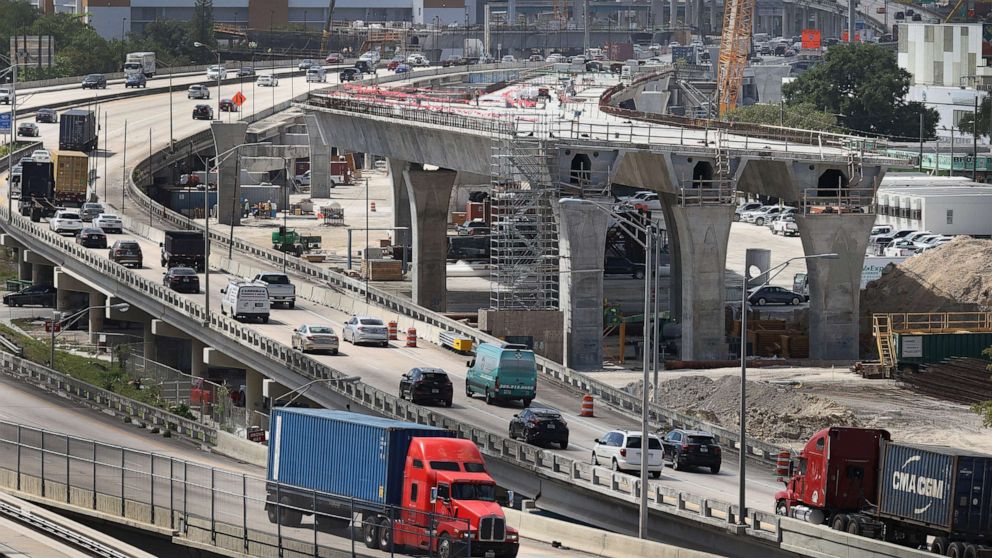
乔·雷德尔/盖蒂影像公司
建筑工人建造标志性桥梁,取代和改善繁忙的高速公路中间
它还包括1740亿美元,以刺激电动汽车市场的就业增长,并在2030年前建立一个由50万个电动汽车充电器组成的全国网络。
拜登说:“它们是我们能在这个国家进行的最有价值的投资之一。”他认为这些投资将提高这个国家的竞争力。
他不止一次提到太空计划,提到它产生的近2000种有影响力的产品和服务,并恳求美国人“再想象一下”
拜登说:“世界其他地区正在逼近,而且正在快速逼近。”。“我们不能允许这种情况继续下去。美国就业计划是有记录以来美国联邦非国防研发支出的最大增幅。”
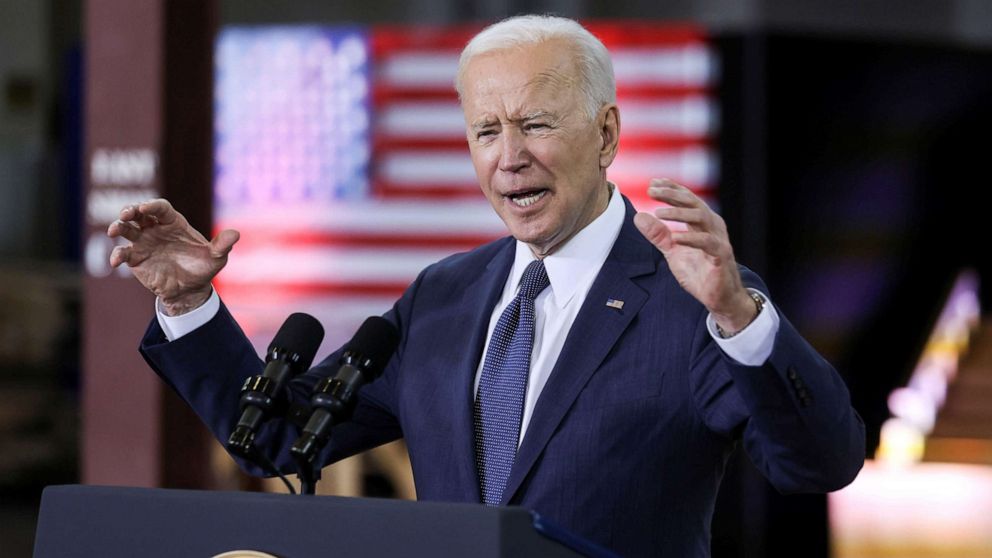
乔纳森·恩斯特/路透社
乔·拜登总统在一次宣传解放军的活动中谈到了他的2万亿美元基础设施计划
当选总统后,拜登制定了“两步拯救和恢复计划”——第一步,他的冠状病毒肺炎救济提案,该提案的一个版本于本月成为法律,第二个,他称之为“重建得更好”的计划。
他在1月份表示,该计划“将在基础设施和制造业、创新、研发和清洁能源方面进行历史性投资。对护理经济的投资,以及对我们的工人为竞争和赢得未来全球经济所需的技能和培训的投资。”
来自共和党和民主党的挑战
拜登将主要支出计划列为优先事项,这是他一揽子计划的前半部分,因为他在国会推动1.9万亿美元的新冠肺炎纾困计划后,抓住了任何早期的势头。
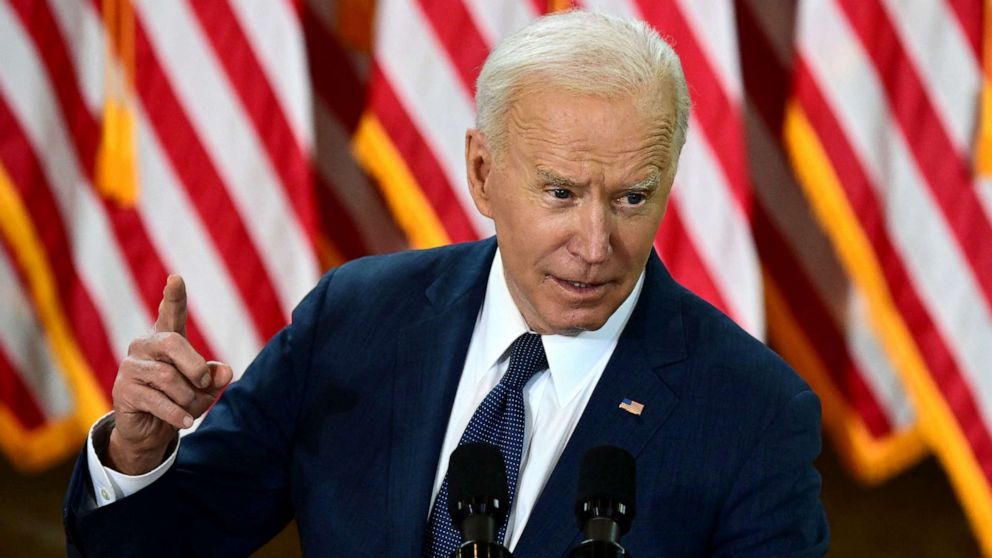
吉姆·沃森/法新社通过盖蒂图像
2021年3月31日,美国总统乔·拜登在匹兹堡发表讲话。
但是,由于民主党在众议院的微弱多数——他只能失去8张民主党选票——以及参议院的平均分裂,基础设施一揽子计划能否在国会通过仍有待观察。
虽然改善机场和道路通常会得到两党的支持,但拜登政府通过增税资助改善的计划可能会让大多数(如果不是全部的话)共和党人反感,甚至可能会让一些民主党人反感。冠状病毒救助计划在美国人中很受欢迎,包括共和党人,但它并没有赢得一个单一共和党投票在国会。
正如救助计划一样,白宫也同样倾向于获得公众对基础设施改善的支持——这是一个迹象,表明白宫准备利用并将努力塑造公众舆论,以此作为团结立法者的手段。
本周,另一个威胁来自纽约地区的几名众议院民主党人,他们希望看到拜登取消当时的总统唐纳德·特朗普(Donald Trump)在2017年签署的一项法律规定的州税和地方税扣除上限。
这样做将有利于郊区的房主,尽管一些进步的民主党人可能会拒绝让相对富裕的美国人受益的税收变化的想法。
纽约民主党众议员汤姆·索奇(Tom Suozzi)本周对美国广播公司(ABC News)表示:“如果不包括SALT,我不会投票赞成对税法进行任何修改。”“我们都把我们对不同问题的不同兴趣放在了美国救援计划的次要位置,因为它非常重要,我们都在这个问题上团结一致。”
周二,索奇与另外两名民主党人,新泽西州的众议员比尔·帕斯卡尔(Bill Pascrell)和乔希·戈特海默(Josh Gottheimer)发表声明,反对任何不取消SALT减税上限的协议。“我们说,‘没有盐,就没有交易,’”他们说。
参议院多数党领袖查克·舒默(Chuck Schumer)周三也表示,他将“努力争取”取消SALT减税上限,尽管《纽约客》支持拜登的基础设施计划,并吹捧白宫表示该计划将创造的就业机会。

rj Sangosti/丹佛邮报/媒体新闻集团通过盖蒂图像,文件
从克莱顿到科伦拜恩街的70号州际公路西行隧道在D
拜登的计划没有取消SALT扣减上限。
众议员普拉米拉·贾亚帕尔,华盛顿。美国国会进步核心小组(Congressional Progressional Cocuus)主席周二对记者表示,该小组不会就取消上限采取立场,但他补充说,“我不确定我们的成员是否会将其视为税收制度的一些根本性改革,这些改革将使税收制度更加公平。”
白宫表示,拜登愿意就共和党和民主党都不喜欢的潜在新税进行谈判。
“总统有一个计划来修复我们的基础设施,并有一个计划来支付它,”普萨基周一说。“但我们也愿意进行这种讨论,我们当然希望随着我们的前进,与国会议员进行讨论,讨论他们同意的领域,他们不同意的领域,他们希望看到更大的重视或不重视的领域。”
民主党人考虑如何绕过共和党的反对
拜登曾表示,他希望在移民立法或枪支改革之前,努力通过一项重大基础设施一揽子计划,以此作为他的第二要务,因为他认为,当前分裂的政治气候可能更能容忍支出计划,这可能有助于美国“竞争并创造大量真正高薪的工作岗位”。
“这是个时机问题,”拜登告诉记者上周。
但如果共和党的支持这次也没有实现,舒默的办公室本周暗示,众议院的民主党人可能会试图通过一个被称为“和解”的预算过程来推动总统的提议——就像他们通过拜登的新冠肺炎纾困法案一样。
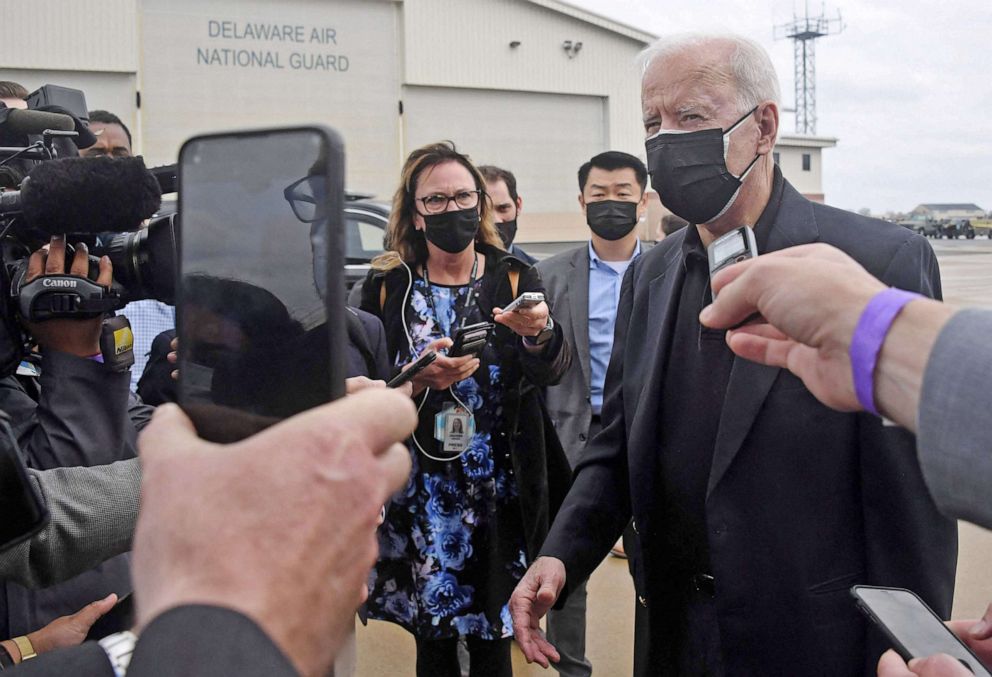
奥利维尔·杜利里/法新社通过盖蒂图像
乔·拜登总统在纽约新城堡机场登上空军一号前向媒体发表讲话
这一过程将允许简单多数——包括副总统贺锦丽打破僵局的投票——通过拜登的法案,而不是通常需要的60票。
但这一步需要所有50名参议院民主党人的支持——在中间派这次表达了优先考虑两党合作的愿望后,这一点远未得到保证。
在周二晚上的电话会议上,当被问及白宫是否希望利用和解来推动一揽子计划通过时,一名政府官员只会说,“这是一个进程的开始”,并将与共和党和民主党接触。
拜登还可能面临党内对一揽子计划整体规模的竞争压力,贾亚帕尔和其他进步人士鼓励白宫考虑得更大。
贾亚帕尔说:“拜登在竞选活动中的提议比迄今为止讨论的要大得多。”“我们真的认为,为了真正解决我们需要进行的投资规模,有足够的空间让总数字达到这个范围(未来10年为6.5万亿美元至11万亿美元)。”
Biden unveils sweeping infrastructure plan, calling it a 'once-in-a-generation investment in America'
PresidentJoe Bidenon Wednesday unveiled what he has called hisnext major priority, a roughly $2 trillioninfrastructureplan to modernize thousands of miles of roads, fix thousands of bridges, expand broadband access and replace all lead pipes carrying drinking water.
"It's not a plan that tinkers around the edges," Biden said in a speech in Pittsburgh. "It's a once-in-a-generation investment in America, unlike anything we've seen or done since we built the interstate highway system and the space race decades ago. In fact, it's the largest American jobs investment since World War II."
To pay for it, he is proposing trillions of dollars intaxeson corporations -- making a traditionally bipartisan issue one expected to trigger Republican opposition. He said he would invite Republicans to the Oval Office and "listen to them" and their ideas about how to pay for his proposals.
The president also faces headwinds from progressive Democrats who do not think the spending package is large enough, as well as more centrist Democrats who feel the opposite. Balancing their competing interests will prove essential as the Democratic leadership pushes a bill through a Congress it only very narrowly controls.
House Speaker Nancy Pelosi told colleagues Monday she hopes to pass it by July 4, if not later that month, according to a person familiar with her comments.
"I'm convinced that if we act now, in 50 years, people are going to look back and say, 'This was the moment that America won the future,'" Biden said Wednesday, decrying the state of U.S. infrastructure compared to other countries. "What I'm proposing is a one-time capital investment of roughly $2 trillion in America's future, spread largely over eight years. It will generate historic job growth, historic economic growth, help businesses to compete internationally and create more revenue as well."
Tax hikes for corporations and 'millions and millions of jobs'
Biden's spending plan, he said, will create millions of jobs. He detailed the first part during a speech in industry- and union-centric Pittsburgh, where he also kicked off his campaign in 2019, pledging to restore the middle class.
"Two years ago, I began my campaign here in Pittsburgh, saying I was running to 'rebuild the backbone of America,'" Biden said, calling himself a "union guy." "And today, I return as your president to lay out the vision of how I believe we do that."
The president proposed pairing the decade's worth of spending with a series of tax hikes on corporations, which the White House said will pay the full infrastructure costs over 15 years.
Biden proposes raising the corporate tax rate from 21% to 28%, a return to the level before the 2017 GOP rewrite of the tax code. His plan would also increase taxes on multinational companies' profits abroad and would eliminate subsidies to the fossil fuel industry, among other ideas.
On a call with reporters Tuesday night, an administration official wouldn't say if Biden plans to send one entire package or separate proposals to Congress. The official also wouldn't say when any of the proposed infrastructure projects could potentially get started.
When asked how many jobs the proposal -- which is being called the "American Jobs Plan" -- would create, the official would not provide a specific number, only saying it would "create millions and millions of jobs."
Part 2 coming next month
Biden said he planned to roll out a second component of his proposal later in April, which press secretary Jen Psaki said Monday would center on "creating economic security for the middle class through investments in child care, health care, education and other areas."
That part could total more than $1 trillion in additional spending, according to people familiar with a Tuesday briefing for top senators on congressional committees who will be involved in crafting the package.
In recent months, Biden has signaled that he would pay for future spending proposals by raising taxes not just on corporations but on wealthy individuals, too.
Biden had previously said that Americans making over $400,000 per year would see their taxes increase and that he supported taxing capital gains as normal income, which are not among the ideas the White House proposed this week.
An administration official told ABC News that "the focus of this plan is on corporate tax reform," and Biden reiterated Wednesday that those making less than $400,000 annually would not see an increase.
"No one, let me say it again, no one making under $400,000 will see their federal taxes go up, period," he said. "This is not about penalizing anyone. I have nothing against millionaires and billionaires. I believe American -- in American capitalism."
It's possible that those tax proposals could appear alongside next month's spending proposal.
What's in the infrastructure plan
The package is separated into four areas: transportation, home, care and research-and-development infrastructure.
Among the proposals is $621 billion in updates to modernize roads, rails, ports, airports, mass transit and highways; $100 billion to eliminate 100% of lead pipes; $100 billion to build out high-speed broadband across the country; $400 billion for community-based care for elderly Americans and a $180 billion investment in clean energy.
It also includes $174 billion to spur job growth in the electric-vehicle market and create a national network of 500,000 electric-vehicle chargers by 2030.
"They are among the highest-valued investments that we can make in the nation," Biden said, arguing they would improve the country's competitiveness.
He invoked the space program more than once, noting nearly 2,000 impactful products and services it generated and implored Americans "to imagine again"
"The rest of the world is closing in, and closing in fast," Biden said. "We can't allow this to continue. An American Jobs Plan is the biggest increase in our federal, non-defense research and development spending on record."
As president-elect, Biden laid out "a two-step plan of rescue and recovery" -- the first, hisCOVIDrelief proposal, a version of which became law this month, and the second, what he called his "Build Back Better" plan.
That plan, he said in January, "will make historic investments in infrastructure and manufacturing, innovation, research and development, and clean energy. Investments in the caregiving economy and in skills and training needed by our workers to compete and win the global economy of the future."
Challenges from Republicans and Democrats alike
Biden has prioritized the major spending plan, the first half of his package, as he seizes on any early momentum after pushing the $1.9 trillion COVID-19 relief package through Congress.
But with a razor-thin Democratic majority in the House -- he can only afford to lose eight Democratic votes -- and an evenly split Senate, it remains to be seen whether the infrastructure package could pass through Congress.
While improving airports and roads typically find bipartisan support, the Biden administration's plans to fund improvements through tax increases could turn off most, if not all, Republicans, and potentially even some Democrats. The coronavirus relief package was popular among Americans, including Republicans, but it did not garner asingle Republican votein Congress.
As it did with the relief package, the White House has similarly leaned into popular support for infrastructure improvements -- a sign it is prepared to use, and will try to shape, public opinion as a cudgel to bring lawmakers on board.
Another threat came this week from several New York-area House Democrats who want to see Biden lift the cap on the deduction for state-and-local taxes, known as SALT, imposed by a law then-President Donald Trump signed in 2017.
Doing so would benefit suburban homeowners, although some progressive Democrats could balk at the notion of a tax change that would benefit relatively wealthier Americans.
"If SALT is not included, I'm not voting for any changes to the tax code," Rep. Tom Suozzi, D-N.Y., told ABC News this week. "We all put our different interests about different issues on the back burner for the American Rescue Plan because it was so important that we all come together on it."
On Tuesday, Suozzi issued a statement with two other Democrats, Reps. Bill Pascrell and Josh Gottheimer of New Jersey, opposing any deal that does not reverse the cap on the SALT deduction. "We say, 'No SALT, no deal,'" they said.
Senate Majority Leader Chuck Schumer, too, on Wednesday said he would "fight hard" to get the SALT deduction caps lifted, although the New Yorker backed Biden's infrastructure plan and touted the jobs the White House said it would create.
Biden's plan does not reverse the cap on SALT deduction.
Rep. Pramila Jayapal, D-Wash., the chair of the Congressional Progressive Caucus, told reporters on Tuesday that the group would not take a position on lifting the cap, but added, "I'm not sure that our members will see it as some of the fundamental reforms to the tax system that would make the system more fair."
The White House has indicated that Biden would be willing to negotiate on potential new taxes that are sure to be unpalatable to Republicans and Democrats alike.
"The president has a plan to fix our infrastructure and a plan to pay for it," Psaki said Monday. "But we are also open to having that discussion, and we certainly expect to have the discussion with members of Congress, as we move forward, about areas where they agree, where they disagree, where they would like to see greater emphasis or not."
Democrats contemplate how to bypass GOP opposition
Biden has said he wants to attempt to pass a major infrastructure package as his second priority -- before legislation on immigration or gun reform, for example -- because he thinks the current, divisive political climate may be more tolerant of a spending plan could help the United States "compete and create significant numbers of really good-paying jobs."
"It's a matter of timing,"Biden told reporterslast week.
But if Republican support does not materialize this time either, Schumer's office this week hinted at the possibility Democrats in that chamber could try to push through the president's proposals through a budgetary process known as "reconciliation" -- the same way they passed Biden's COVID-19 relief bill.
That process would allow for a simple majority -- including Vice President Kamala Harris' tie-breaking vote -- to pass Biden's bills, unlike the 60 votes normally needed.
But that step would require the support of all 50 Senate Democrats -- far from guaranteed after centrists have expressed a desire for prioritizing bipartisanship this time around.
Asked on Tuesday night's call if the White House hopes to use reconciliation to push the package through, an administration official would only say, "this is the beginning of a process" and would be reaching out to Republicans and Democrats.
Biden could also face competing pressures inside his party on the overall size of the package, with Jayapal and other progressives encouraging the White House to think bigger.
"The Biden proposal on the campaign trail was significantly larger than what's been discussed so far," Jayapal said. "We really think there's ample room to get the overall number up to somewhere in that range (of $6.5 trillion and $11 trillion over the next 10 years) in order to really tackle the scale of investment that we need to make."






